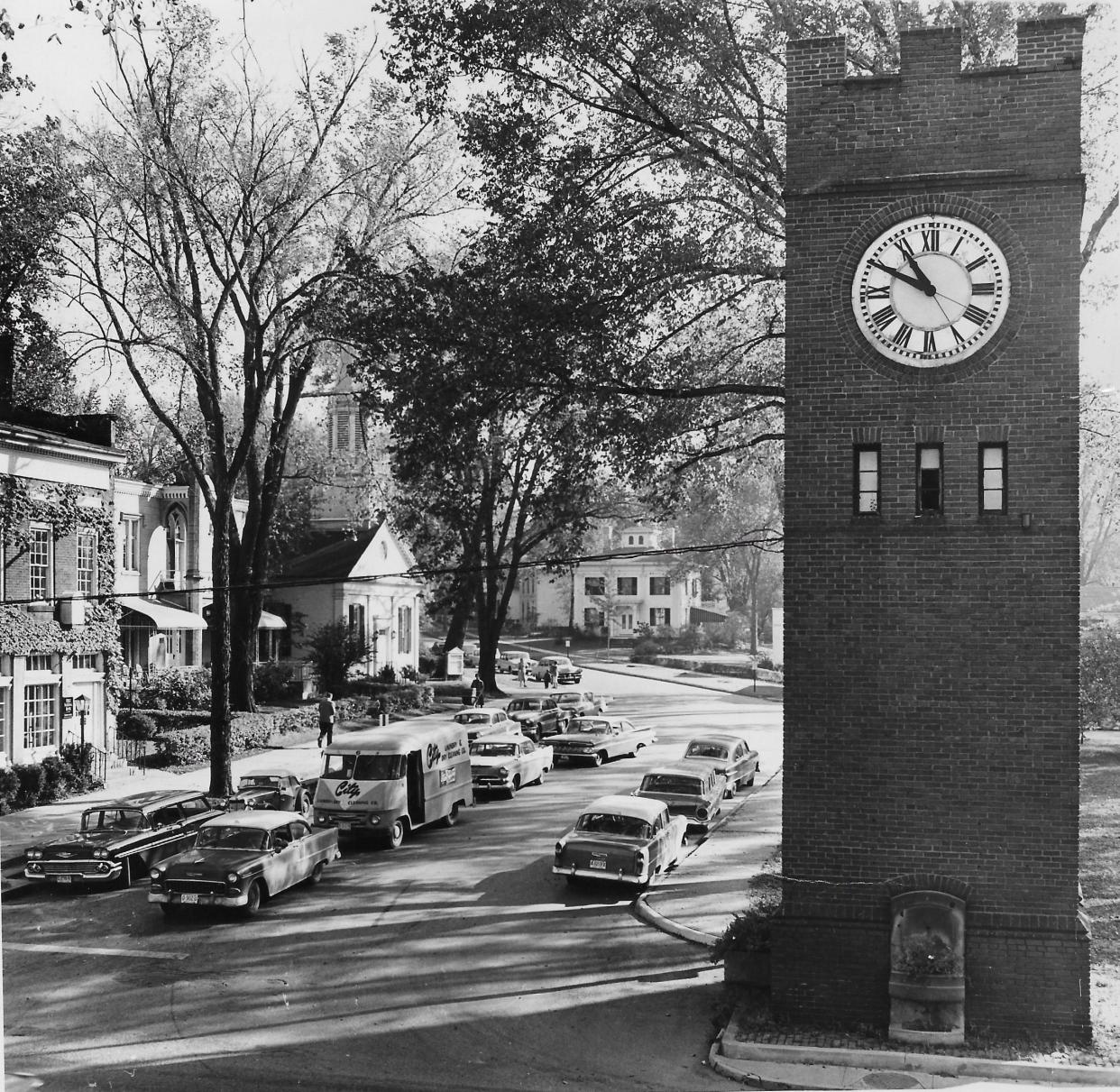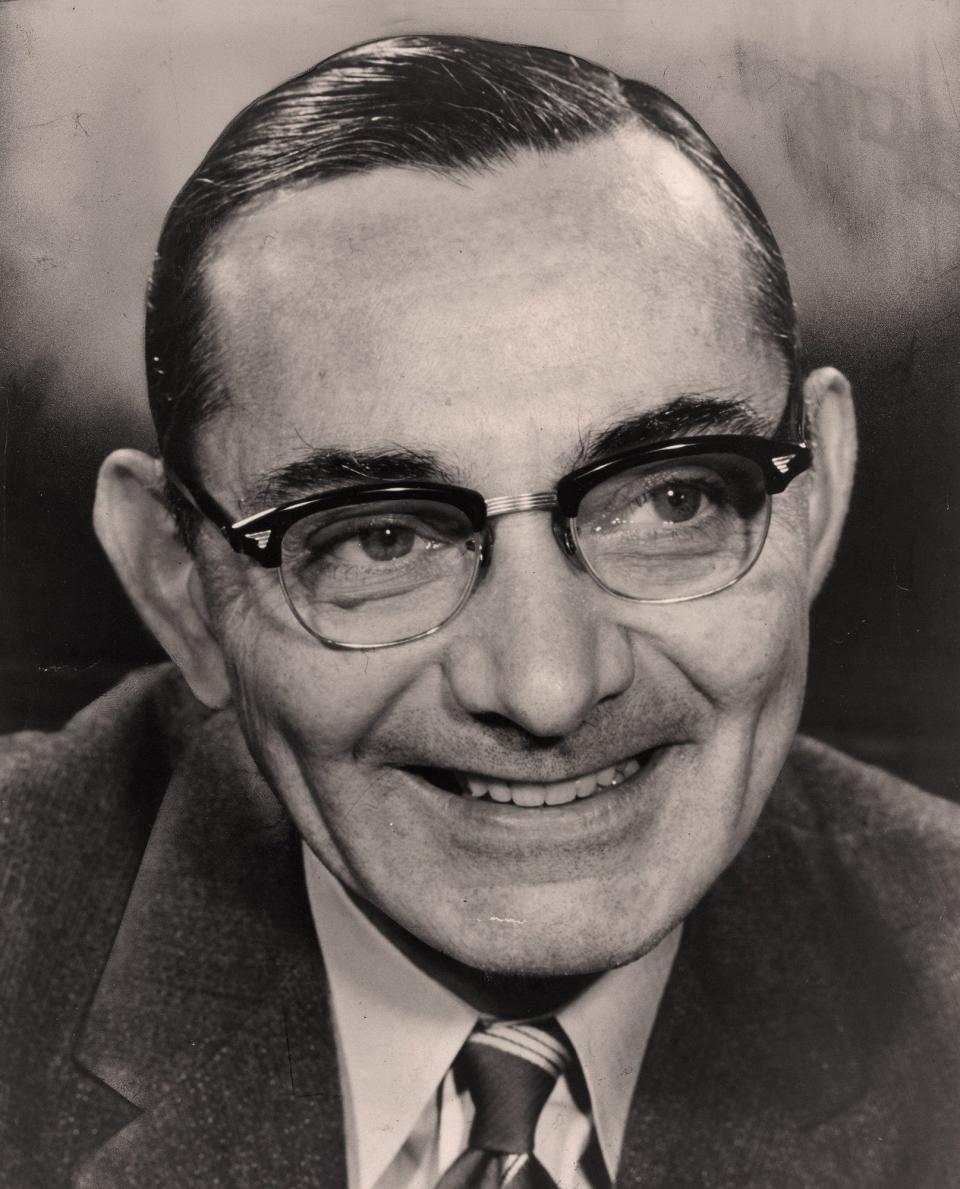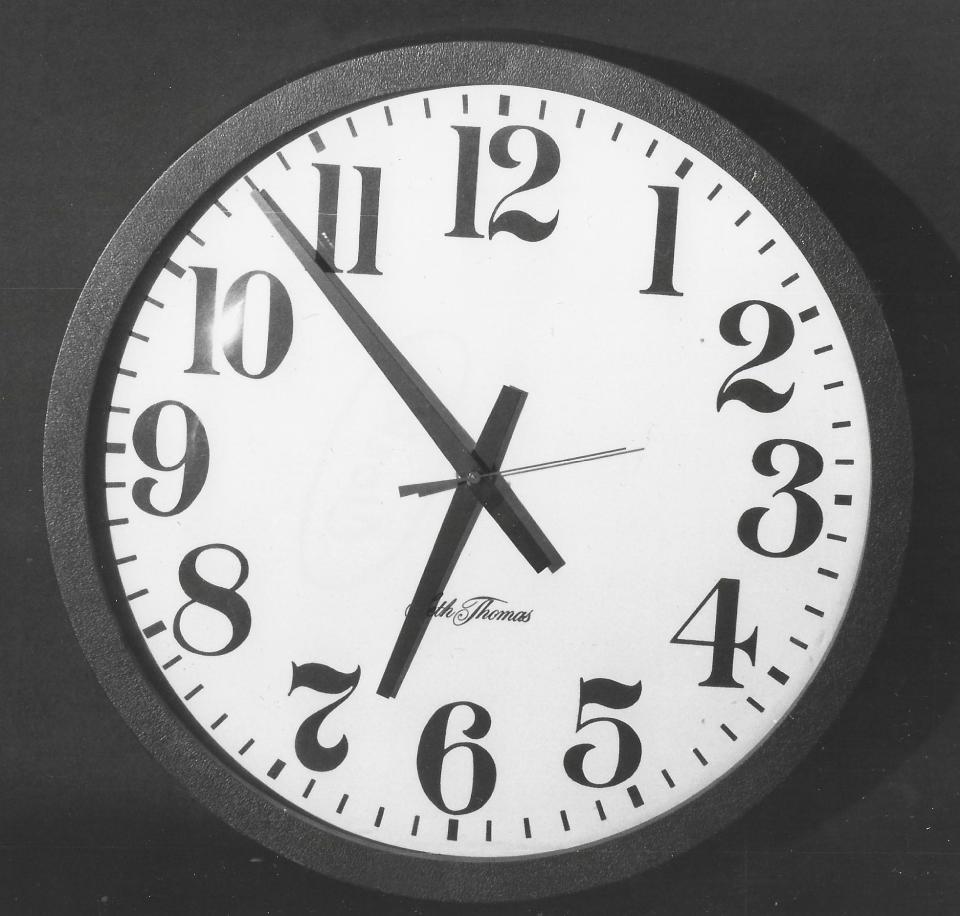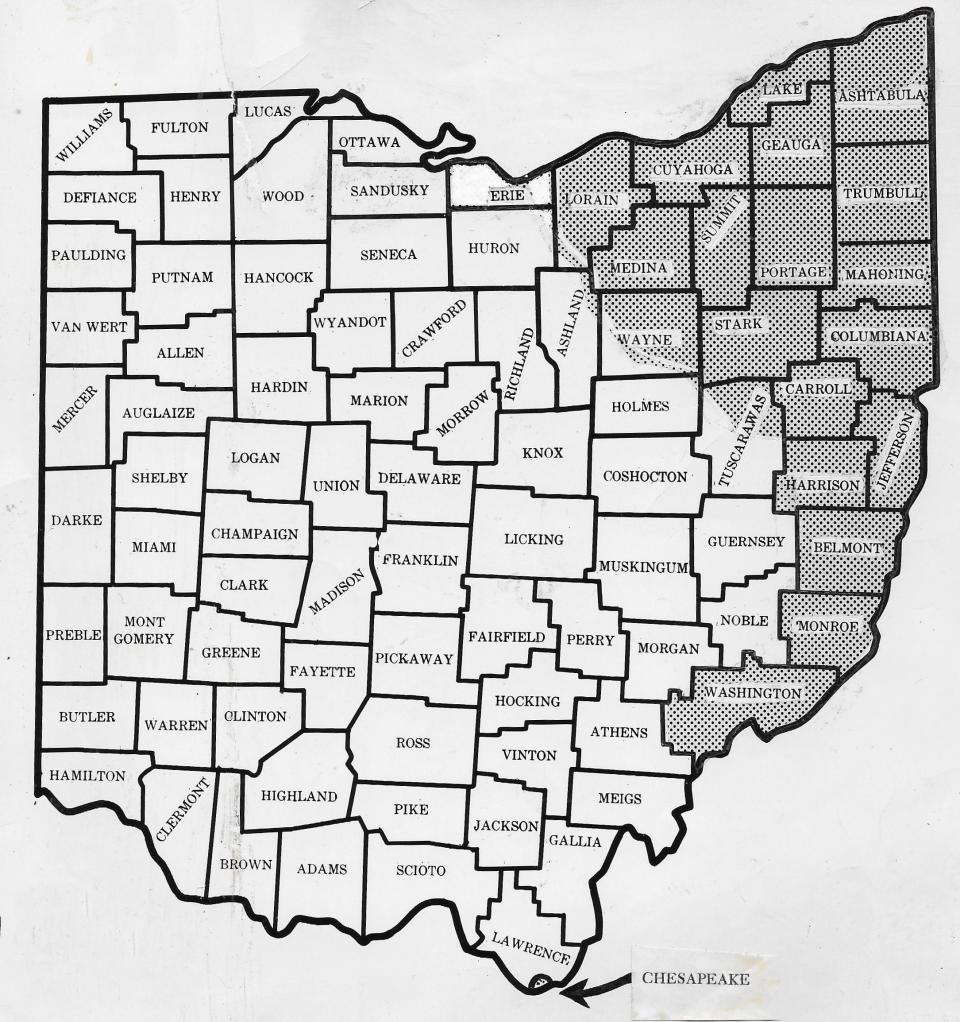Local history: What a strange time! Akron and Hudson used different clocks in 1958

Autumn 1958 was a confusing time in Northeast Ohio.
For one chaotic month, clocks could not be trusted. Travelers unexpectedly arrived an hour late or an hour early, depending on their destinations.
Neighboring communities watched the sunset 60 minutes apart. Radio and television schedules differed from town to town. Taverns on one side of a street had to shut down while those on the other side continued to operate.
Bewildered citizens called stores, schools, factories, churches, theaters and other places to see when they opened or closed.
Catching a bus, train or plane required complex math computations.
Donovan Husat, 77, of Hudson, recalls this strange situation in Ohio history, but when he mentions it to others, he often draws blank stares.
“I am the only person I know who remembers this bizarre event, although I couldn’t remember the details,” he said.
Hudson and Akron were an hour apart for four weeks — as were many other communities in Summit County.
Husat was 12 years old.
“I was getting my teeth worked on at that age,” he said. “My orthodontist was in downtown Akron at the corner of Main and Bowery. Since there was an hour’s difference, we had to figure out what time to leave.”
Normally it took about 30 minutes to drive from Hudson to Dr. William L. Hieber’s office at the Akron Savings & Loan Building, but suddenly Akron was 60 minutes behind Hudson, and travelers had to account for traffic, parking and other factors.
“Let’s say it took a half-hour to get there,” Husat said. “If I had an appointment at 1:30, we could leave Hudson at 1:30 and we would get to Akron at 1:30 or whatever. If the appointment was over at 2, we would leave at 2 and get home at 4.”
Fast time vs. slow time
The trouble originated the previous spring when Cleveland and Youngstown voters agreed to extend daylight saving time, known as “fast time,” from late September to late October to match the eastern United States. It was already confusing in Ohio with the state’s southern and western regions remaining on Eastern Standard Time, or “slow time,” in the summer while the northeast had daylight time.
Cuyahoga County suburbs followed Cleveland’s lead and the movement spread to communities in northern Summit County, including Hudson.
Akron didn’t budge. By law, it couldn’t. Its voters had passed a charter amendment in 1948 that maintained Eastern Daylight Time from the last Sunday in April through the last Sunday in September.
Mayor Leo Berg opposed a City Council proposal to extend daylight saving time to late October.
“I won’t agree to go against the charter without a compelling reason, and I don’t consider this a compelling reason,” Berg told reporters in 1958.

City officials balked at spending $25,000 (over $260,000 today) on a special election over the issue. They decided to grit their teeth and wait until the November election for a new charter amendment vote.
Even if Akron had placed the issue on the spring ballot, though, there could have been problems.
“We anticipated these difficulties if Cleveland and Youngstown extended fast time, but we might have had just the reverse had we put it on the ballot,” Law Director John Kelly explained in 1958. “... Akron might have extended fast time only to find the other cities had not.”
Does anyone have the time?
Akron turned its clocks back one hour at 2 a.m. Sept. 28 and returned to Eastern Standard Time. Joining the city were Barberton, Cuyahoga Falls, Mogadore, Peninsula, Stow and Tallmadge.
Hudson remained on Eastern Daylight Time along with Boston Heights, Macedonia, Northfield Center, Northfield Village, Sagamore Hills and Twinsburg.
The chaos didn’t end there.
All of Stark County followed the lead of Canton, Massillon and Alliance in extending Eastern Daylight Time. All of Portage County, including Kent, Ravenna, Streetsboro, Aurora and Mantua, extended EDT with the exception of the Portage section of Mogadore.

All of Wayne County turned back an hour except for Dalton, based on its proximity to Massillon. All of Medina County extended EDT except for Wadsworth, which opted to turn back.
Holmes County and Ashland County didn’t have a time change because they stayed on Eastern Standard Time all year.
It was possible to gain an hour, lose an hour and regain an hour in a 30-minute drive.
People arrived at restaurants to find them closed. Air travelers risked missing their flights. Churchgoers found services already in progress. The opening pitch of the World Series between the New York Yankees and Milwaukee Braves was at two different times, depending on the Ohio community.
And dental patients had trouble straightening out appointments.
“Obviously at that age, I had no idea what was going on,” Husat recalled. “I just know that it was all very, very strange.
“There were other people in Hudson, and I’m sure some in Akron, who had to deal with the same thing. At Western Reserve Academy at that time, there were a lot of kids from Akron who were boarding students there or their parents would drive them back and forth.”
Clocked by the sun
Old-timers began to reminisce about “sun time,” which was perfectly adequate in the days before speedy transportation. In the 19th century, communities set their clocks to noon when the sun reached its highest point overhead.
There were more than 50 regional times in use in the United States before U.S. railroads held a convention in Chicago in 1883 to adopt four time zones: Eastern, Central, Mountain and Pacific.
Cleveland and Youngstown switched from Central to Eastern time in 1914 and Akron followed a few years later. Ohio was divided until 1927 when legislators adopted Eastern time for the entire state.
But fast time remained a sticking point — as 1958 proved.
Northern Summit County residents finally turned their clocks back at 2 a.m. Oct. 26, bringing an end to the four-week crisis.
In November, Akron voters approved a charter amendment to delay the time change until the last Sunday in October. The issue passed 56,017 to 37,585, ensuring that Akron and Hudson would synchronize forevermore.

Ohio remained divided over daylight saving time for another nine years. The northeastern counties followed it while the rest of the state ignored it.
After Congress passed the Uniform Time Act of 1966, the Ohio legislature approved daylight saving time for the entire state in 1967. Ohio residents turned their clocks ahead one hour on April 30 that year.
The time glitch of 1958 soon was forgotten.
But not by everyone.
“It was all very, very bizarre,” Husat said.
Mark J. Price can be reached at mprice@thebeaconjournal.com
Vintage ads: See haunted house ads from Akron's spooky past
Vintage photos: When WMMS ruled Cleveland radio
This article originally appeared on Akron Beacon Journal: What a strange time! Akron and Hudson clocks differed in fall of 1958

